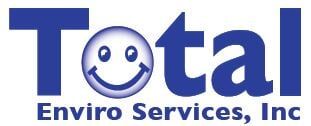Caring for your business's parking lot involves more than simply keeping the asphalt from cracking and having parking lines repainted when they become dull, it's about keeping the storm drains in good condition as well. Storm drains are responsible for eliminating excess water caused by cleaning, rainfall, or other water sources — allowing the drainage to flow into natural lakes, rivers, and canals.
You likely don't have to do much to keep your parking lot's storm drains in working condition — other than cleaning out the covers on the drains when they get littered with debris like trash and leaves. Depending on your city's rules for storm drain inspections, you will need to have your parking lot drains professionally attended to quarterly or yearly.
Here are three signs you need to have your storm drains inspected outside your normal required stipulations. Knowing when to have your parking lot drains professionally cleaned and inspected can help protect your parking areas and the environment.
1. Water Pooling in Parking Areas
The main reason why storm drains fail to eliminate water from large areas is clogged pipes or grated entry areas. Your parking lot should never have pooled water in locations where the asphalt surface naturally dips. If you notice water collecting around your storm drains or in large surface areas of your parking lot, then check the grates of your storm drains to see if debris is keeping water from getting through.
If water continues to pool up in your parking lot after clearing your storm drain of clutter, call a storm drain inspection specialist right away. A specialist will use a special tool to see inside your storm drain pipes to see if any debris is stuck deep inside the pipes or if the catch basins are faulty and need to be replaced.
2. Damage to Grates
Grates in parking lots are often located along the sidewalk or in the actual paved parking areas where vehicles can drive over them. These grates are often damaged due to high vehicle traffic, or they can simply deteriorate because the asphalt surrounding storm drains fails.
Any damage to storm drain grates should be immediately addressed by a professional. Leaks or cracks in grate frames allow excess debris to enter your storm drain pipes, which potentially pollutes the natural water source the drains lead to. After your storm drains are inspected, grates may need to be repaired or replaced. You may also need to involve an asphalt contractor to reframe them so they last longer.
3. Parking Lot Expansion
Any potential increase in pollutants entering your storm drains should be made known to your city officials and a licensed storm drain inspection company — including the expansion of your parking lot. More parking for your customers or employees means greater vehicle emissions and potential oil leaks, and you may need to increase the number of storm drains you have in your parking area as well.
Your storm drain specialist will inspect the water going through your drains to make sure your business is staying within environmental guidelines. Your pipes will be inspected for signs of erosion if your water levels show a higher volume of chemical pollutants — such as oil and antifreeze from parked vehicles.
Keeping your parking lot's storm drains in good repair is no easy task, but the right professional can help your business stay in compliance with your municipality's environmental guidelines. To keep your parking lot drains in their best condition, have them inspected regularly by our team of specialists at Total Enviro Services Inc. We are also able to address all your septic needs.

